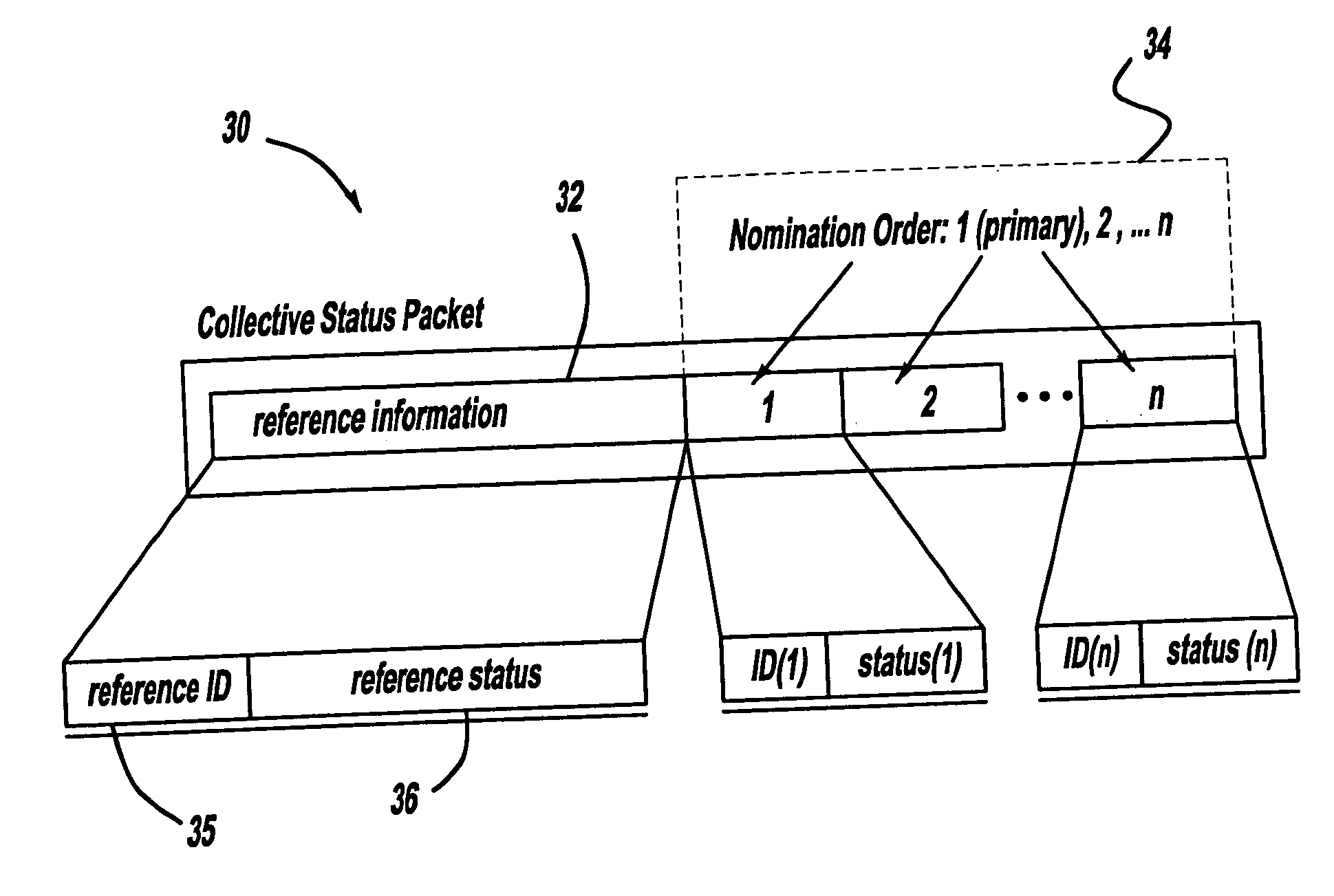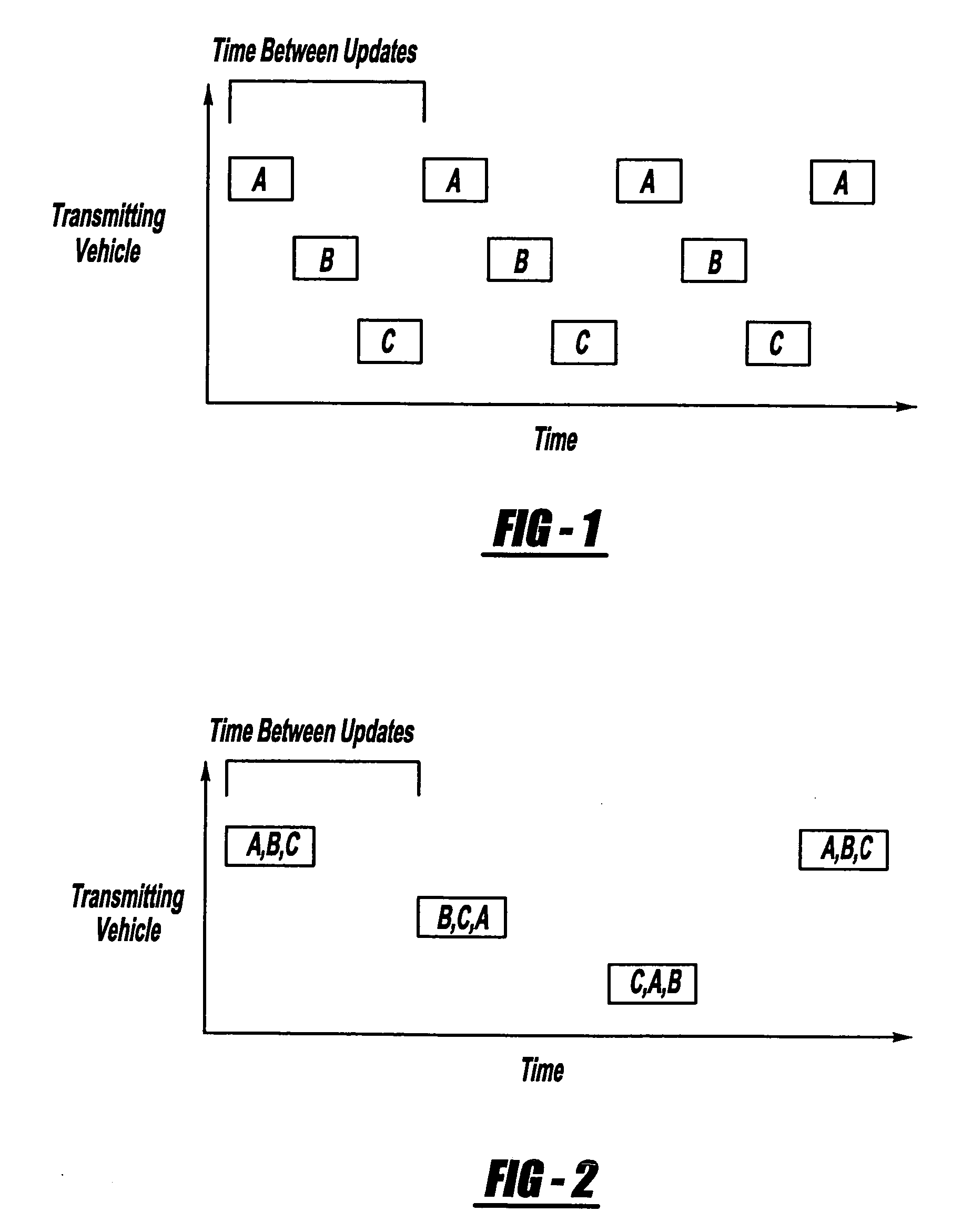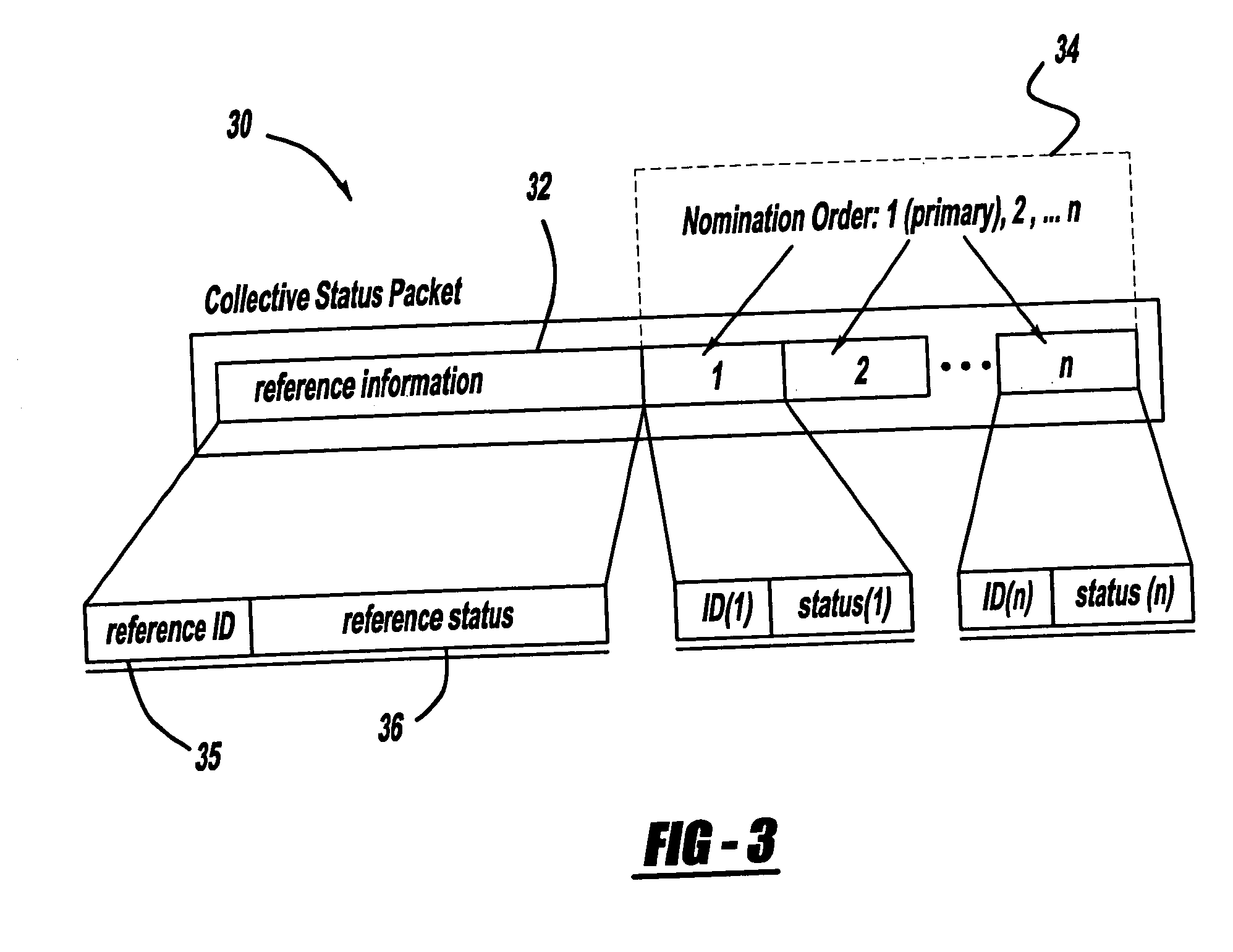Collaborative multicast for dissemination of information in vehicular ad-hoc networks
a technology of vehicular ad-hoc networks and collaborative multicast, which is applied in the field of intervehicle communication, can solve the problems of sparse and dense networks, latency concerns of high-density networks, and problems such as sparse networks and dense networks
- Summary
- Abstract
- Description
- Claims
- Application Information
AI Technical Summary
Problems solved by technology
Method used
Image
Examples
Embodiment Construction
[0012] Acting independently in a best-case scenario, vehicles may transmit their status vector as depicted in FIG. 1 where the update rate, i.e. the rate at which a particular vehicle's status is broadcast, is clearly much less than the packet rate.
[0013] In contrast, vehicles may transmit collective information (i.e. status vectors of other vehicles) in addition to their own reference status. The collective information is overheard and cached from previous recent transmissions. Thus, each vehicle acts as a representative in turn. Since each vehicle transmits collective information, the overall update rate can be maintained with far fewer transmissions per vehicle as depicted in FIG. 2. This approach serves as the basis for a collaborative nomination multicast algorithm as will be further explain below.
[0014] VSCC has proposed a preliminary vehicle-to-vehicle data message set requirement that includes the following basic elements along with a vehicle identifier (such as a 48-bit c...
PUM
 Login to View More
Login to View More Abstract
Description
Claims
Application Information
 Login to View More
Login to View More - R&D
- Intellectual Property
- Life Sciences
- Materials
- Tech Scout
- Unparalleled Data Quality
- Higher Quality Content
- 60% Fewer Hallucinations
Browse by: Latest US Patents, China's latest patents, Technical Efficacy Thesaurus, Application Domain, Technology Topic, Popular Technical Reports.
© 2025 PatSnap. All rights reserved.Legal|Privacy policy|Modern Slavery Act Transparency Statement|Sitemap|About US| Contact US: help@patsnap.com



